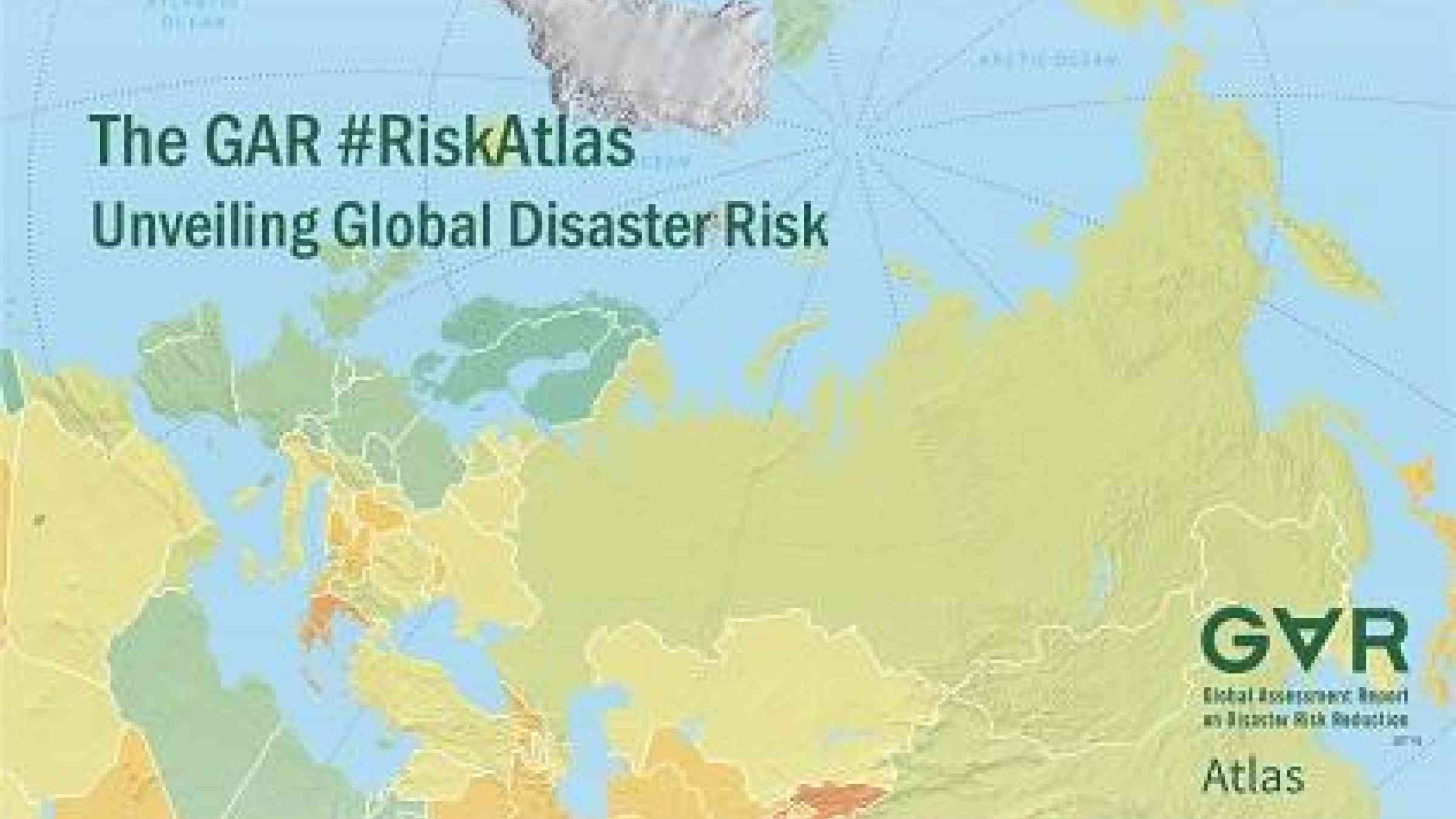A new milestone for risk mapping

CANCUN, Mexico, 25 May 2017 – The UN Office for Disaster Risk Reduction today launched a landmark interactive atlas that exposes the hidden threats posed by natural hazards in national economies and countries’ urban centres.
The Global Assessment Report Risk Atlas (GAR Atlas), released at the 2017 Global Platform for Disaster Risk Reduction, builds on a multi-year effort by a consortium of leading scientific institutions coordinated by UNISDR, and provides a global vision of where and how disaster risk can undermine development.
It estimates the probability of future disaster losses in the built environment for five major hazards – earthquakes, tsunamis, river flooding, and tropical cyclones, plus winds and storm surge – for every country and territory in the world.
“This is a critical tool to create risk awareness at the levels we want,” said Ms. Maryam Golnaraghi, Director, Extreme Events and Climate Risk at the Geneva Association, the insurance industry’s leading international think tank.
Her comments were echoed by Mr. Robert Muir-Wood, Chief Research Officer at Risk Management Solutions.
“This is a real milestone. For the first time, you’ve got an actual atlas of disaster risk,” he said, adding that he had loved maps since he was a boy.
The GAR Atlas has been launched in online version, an application, and a limited edition print format that contains augmented reality icons that link it to its companion application, GAR for Tangible Earth.
Tangible Earth, developed by the Japan-based Earth Literacy Program, is the world’s first interactive digital globe featuring various earth processes and global data such as real-time weather, earthquake and tsunami or climate variations.
Mr. Rowan Douglas, CEO Capital Science & Policy Practice at reinsurers Willis Towers Watson, was enthusiastic about the GAR Atlas: “To create a multi-peril database – because it’s far more than an atlas – the scientific achievement is incredible.”
The GAR Atlas is based on the findings of UNISDR’s series of biennial reports on risk, which since 2009 have raised the bar for research on past, present and potential future hazard impacts.
“The idea is to pull together all the risk information that we’ve been working on in one place,” said Mr. Andrew Maskrey, who heads UNISDR’s Risk Knowledge Section and has steered its research for years.
“Risk is often invisible,” he underlined.
Exposing and then tackling risk is critical, given that global disaster losses have swollen to US$520 billion a year – considered a conservative estimate – owing to factors including climate change, rapid urbanisation and the expected growth of risk-exposed assets. This growth in risky investments is often due to a lack of adequately costing disaster risk, coupled with high profit margins for investments in many areas exposed to earthquakes, tsunamis, storm surges, floods and other hazards.
That makes it important to spotlight the consequences of risk-stoking decisions, whether by businesses or the authorities, in order to help protect communities around the globe.
“One of our jobs is to disturb the comfortable and comfort the disturbed,” said Mr. Maskrey.
Tackling risk at source is the primary goal of the Sendai Framework for Disaster Risk Reduction, a 15-year agreement adopted by the international community in 2015.
The GAR Atlas builds on the Global Risk Model (GRM) developed by UNISDR and its partners over the years. It uses the robust metrics developed by the international modeling team, such Average Annual Loss (AAL) and Probable Maximum Loss (PML), both of which enable detailed snapshots of risk according to time and place.
“This takes into account events that have not yet occurred, and not just historical events,” said Mr. Omar Dario Cardona, a National University of Colombia expert in computational economics, risk management and insurance, and macroeconomics, who has been a key player in developing the GRM. “Risk assessment is the key to awareness, but also highlights the responsibilities of decision-makers,” he said.